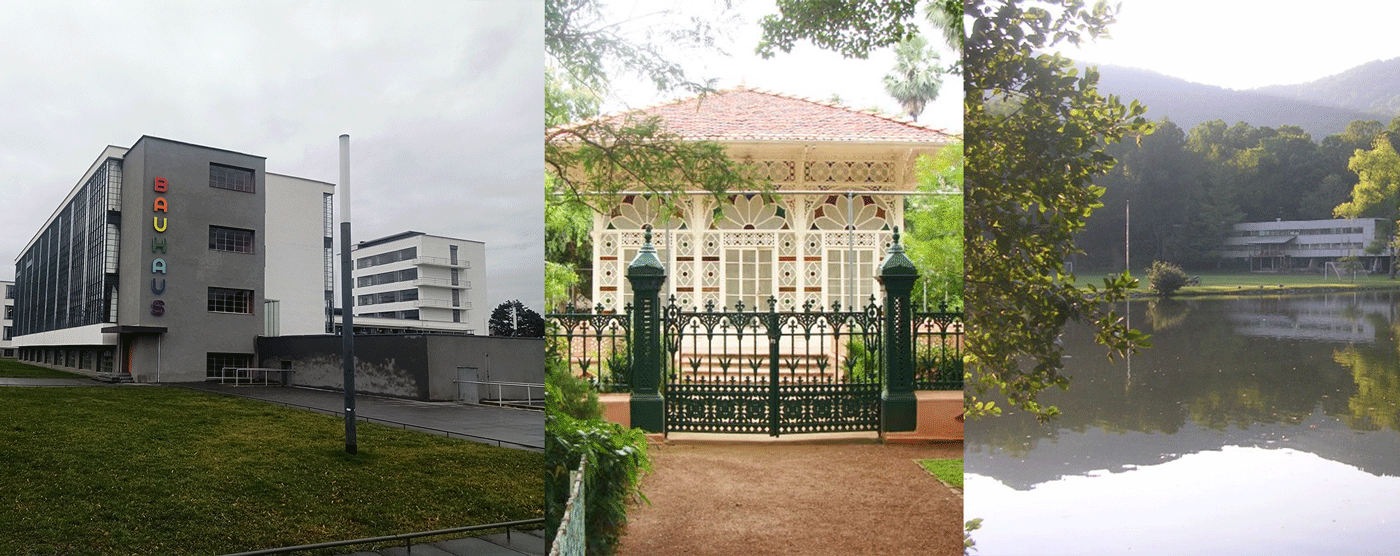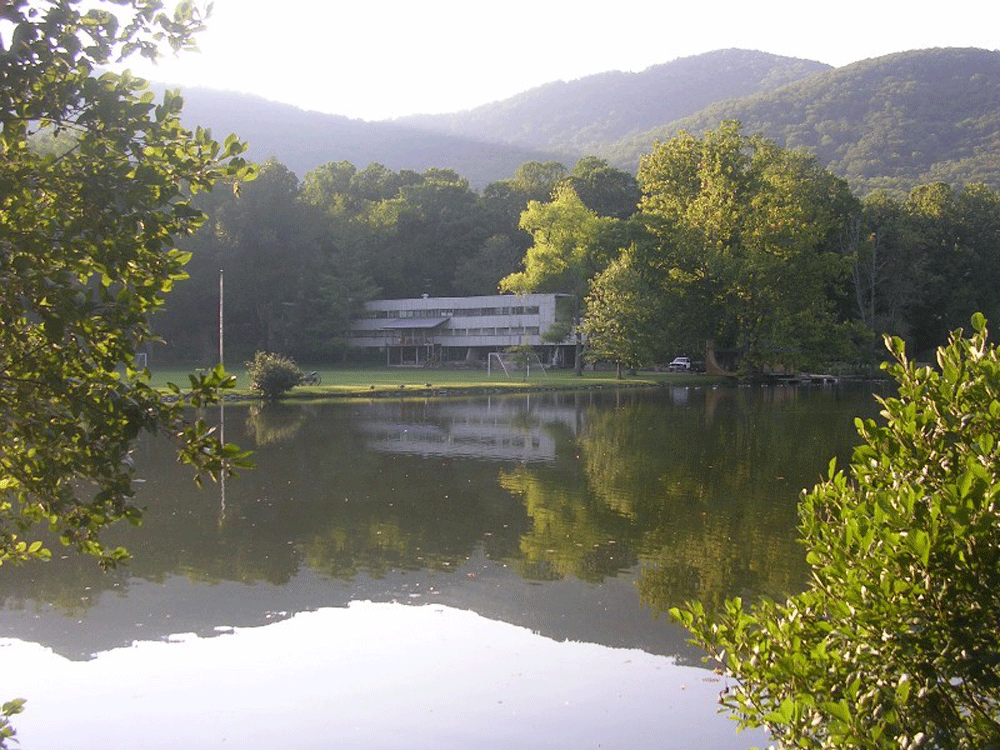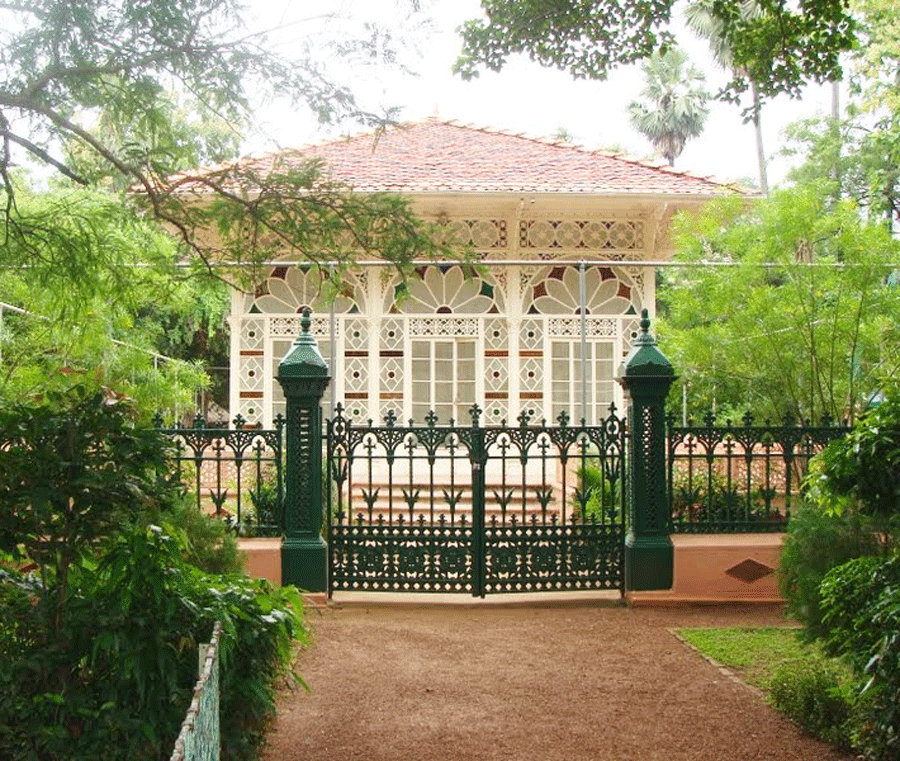Submitted by Pappal Suneja
Recapitulating: From, Bauhaus to Santiniketan, and finally Black Mountain College
United States Architecture News - Mar 28, 2020 - 21:58 12981 views

This Recapitulation critically re-narrates two diverse yet similar ‘regimes of knowledge’ adopted by Santiniketan, and Black Mountain College. It shall reflect partially upon the Bauhaus School to understand these ‘Schools of Thought’ with emphasis upon its Organization and personal dimension. The summary shall also contextualize common as well as divergent philosophies followed by both schools as a part of imparting Education strongly linked with Art and freedom of expression.
Here, Black Mountain College (BMC) is a progressive liberal arts college founded in 1933 in the rural Southern Appalachian town of Black Mountain, North Carolina and Santiniketan, is an abode of learning founded by Rabindranath Tagore in 1901, it was formulated into a University in 1921 as a thriving center of Art.
 Black Mountain College, Image © wikipedia.org
Black Mountain College, Image © wikipedia.org
The Black Mountain College (BMC), North Carolina and Santiniketan, Kolkata were the very initial path breaking steps towards a new way of teaching when the world was slowly getting hitched to ‘Commodification of Education’. Both of these schools were uniquely diverse pertaining to their context, but shared a similar vision which can be related to the Bauhaus Movement in Germany that that developed a new approach towards acquisition of knowledge. The ideologies of unlearning to foster objectives towards gaining new knowledge paradigms, openness to pre-language mode of working and experimenting with material, color, geometry and form are attributed to the Bauhaus school of thought. Both Santiniketan and BMC attempted to bring different forms of Art under one roof, a very rare phenomenon back then in the early 20th Century. The guiding principles of BMC catered to “communal life, Experimentation, working with specific aesthetic-educational models and development of transgressive practices in social effectiveness of art” (Blume 2015, 99). And as per Sanchari Pal (2016), Santiniketan developed under the direction of Rabindranath Tagore focused on Cultural Exchange, Human Values and a sustainable Environment.
 Santiniketan Prayer Hall, Image © thebetterindia.com
Santiniketan Prayer Hall, Image © thebetterindia.com
On a common level, both these schools were formulated as a thriving center of Art as per their own contexts. The primary focus was to create a learning community with interdisciplinary modes of exchange. The curriculum, organization structure and core values were based on the pragmatic visions of its promoters namely John Dewey (BMC) and Rabindranath Tagore (Santiniketan). As we dive into the subject of education, Santiniketan promoted open air classrooms under a tree with a philosophy to learn from nature and be connected. Whereas, according to the promoters of BMC “Experiments were open-ended experiences” (Blume 2015, 102) so in order to building social relations. The construction of Studies Building was led by students and teachers of BMC with a module of ‘learning and teaching as collective activities’. Also, on a relatable mode Tagore is known to have involved students in rural construction by “expand[ing] the school’s relationship with the neighboring villages of the Santhal tribal community” way back in 1930s (Paul, 2016). Both of the institutions gave artistic freedom to its students as the common motto behind the school of thought was the engagement of students with each other, teachers and the environment around. The philosophy of both ventures here hints at self-realization being an important aim of education as the schools wanted to build personalities rather than followers of conventional professions.
On a more divergent level, BMC was famous for breaking up hierarchies between student and teacher to make education more involved and convenient. On the other hand, the teacher and student relationship corresponded to a very poignant level of respect at Santiniketan. Also, focus of this school was more towards “environment friendly education system” and connection of man with nature (Pal, 2016). On a contrary, BMC promoted color theory experiments and Spectrodrama (Theatrical Experimentation). These were based on trial and error as all the activities at BMC were formulated by the professors without thinking for a final outcome. The vision behind the same can be understood as “Experimentation [being] served as a means of developing artistic skills” to be learned by everyone (Blume 2015, 102). The BMC lasted for about 24 years, primarily due to shortage of funds and the challenges faced by the promoters for its maintenance since the inception. It is quite intriguing to realize that, one school’s closure (The Bauhaus), leads to open the doors of another that is BMC. It can be articulated by the fact that knowledge transfer cannot be stopped, how much tough the circumstances of power control happens in the political surroundings. Though, the life of BMC was a short one, it has definitely impacted and triggered much required spark because of its avant garde efforts to promote diverse forms of Art. Santiniketan was converted into a university called ‘Visva Bharati University’ at a later stage and though it has adapted the new modes of education with changing times, the philosophy and approach behind the same is respected and followed till date.
On a concluding note, There is a dire need of changing the conventional education system (textual and exam oriented one) followed worldwide to a more practical and experimentation based one. Santiniketan and BMC have set a great example that “Where the head is held high and knowledge is free” (Rabindranath Tagore), the path towards development opens up. The idea of education should be linked to the immediate surroundings and also should connect to the cross-disciplinary nature of Arts that binds up everyone together. The thriving nature of Art in the center and its correlation with the other fields broadens the spectrum of knowledge transfer and reception at another level. The connection of day to day activities and education makes it more relatable and the impression of the same is everlasting. There is a long way ahead for a paradigm shift whereby practical needs and holistic vision shall drive the education system on a global scale. To sum up, I shall quote the major ideology unfettered by any regional constraints, as developed by Rabindranath Tagore: education imparting institutes must be a place ‘Where the whole world can find a nest’.
References:
Eugen Blume, ed., An Interdisciplinary Experiment 1933-1957 in Black Mountain, (Berlin: Spector Books, 2015)
Sanchari Paul’s Travel Tales: ‘Exploring Tagore’s Santiniketan, an abode of learning unlike any in the world’, Available Online: (https://www.thebetterindia.com/66627/santiniketan-rabindranath-tagore-bengal/) [Accessed Date: 28th March 2020]
Top Image formulated by Pappal Suneja
